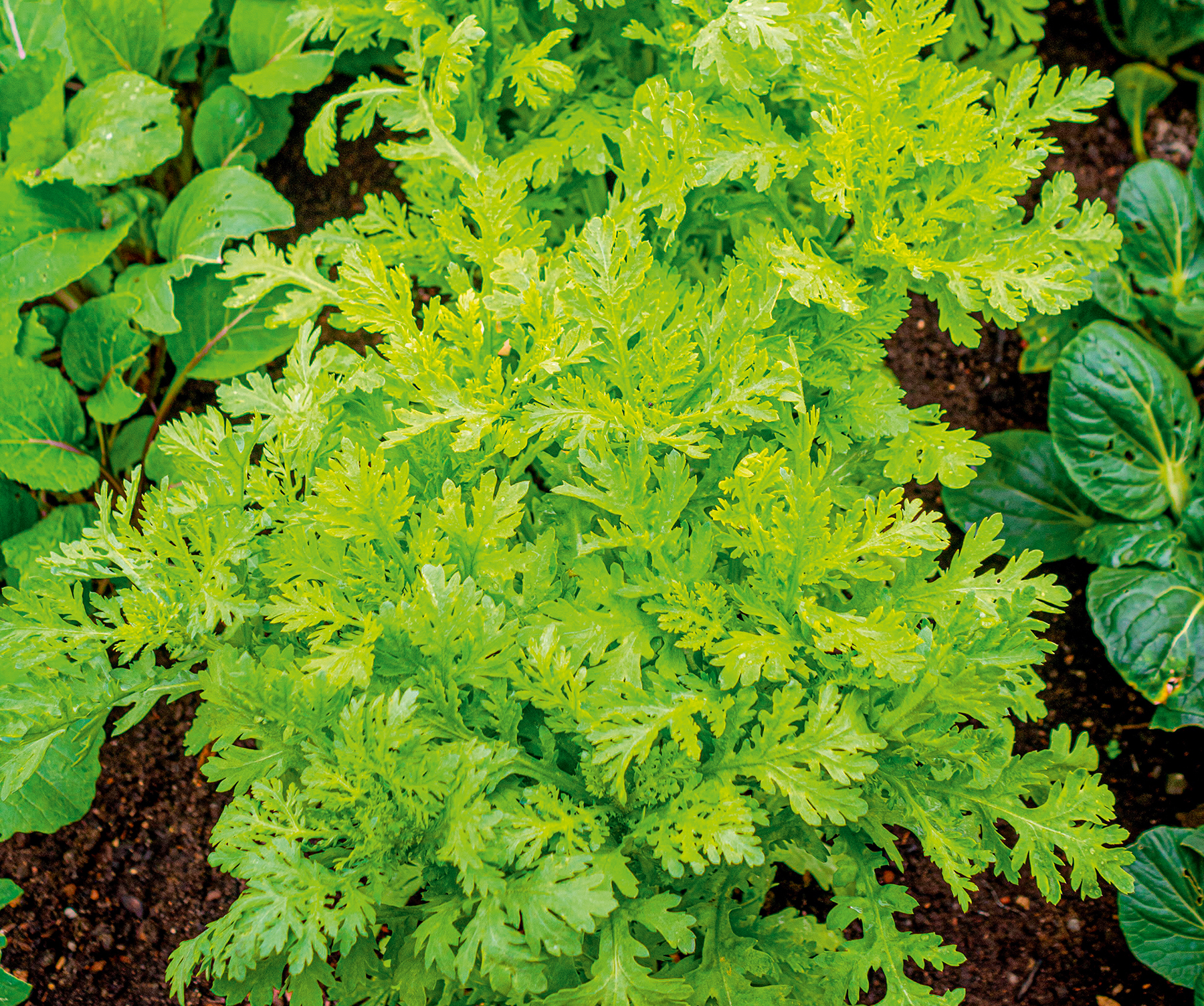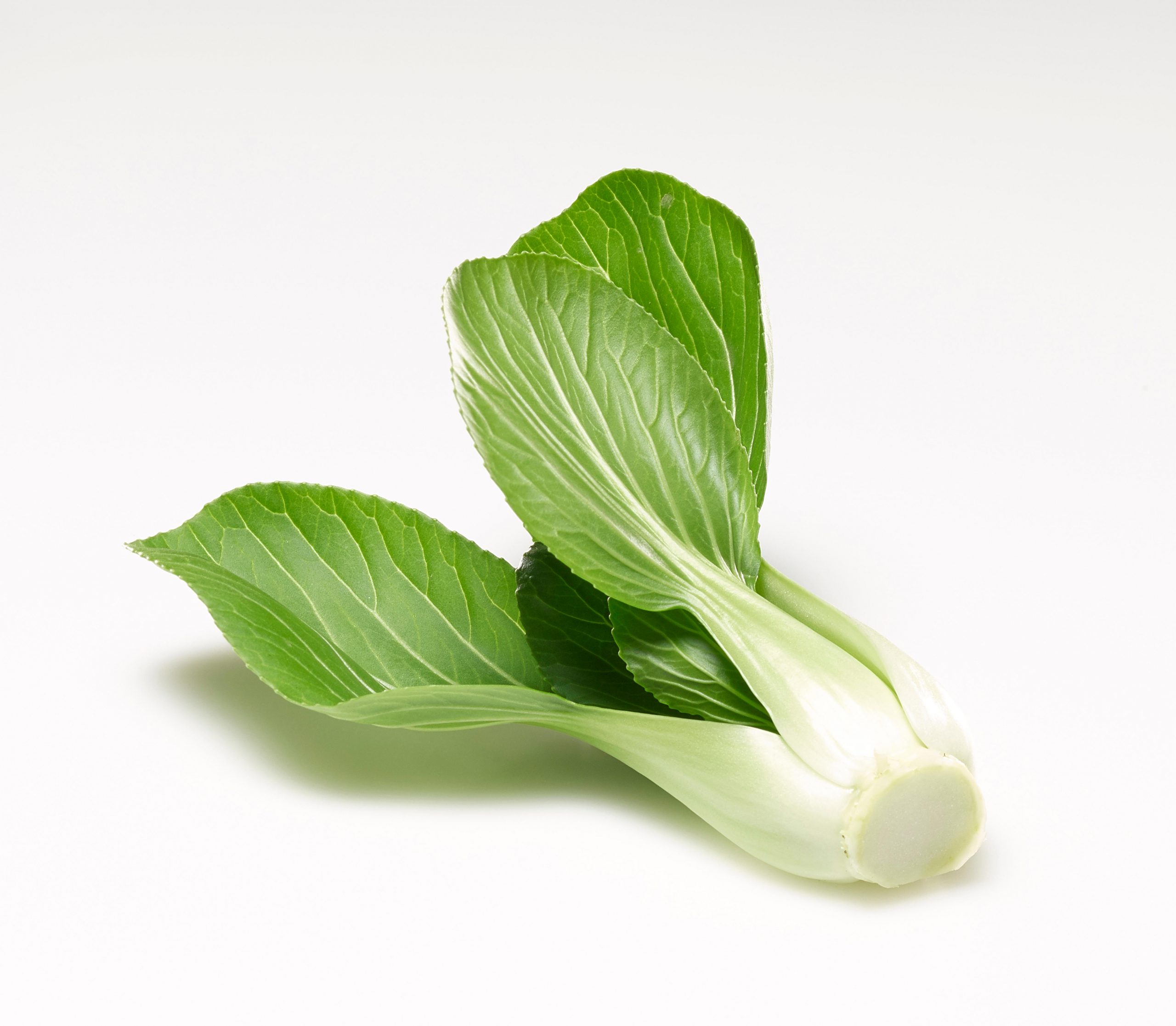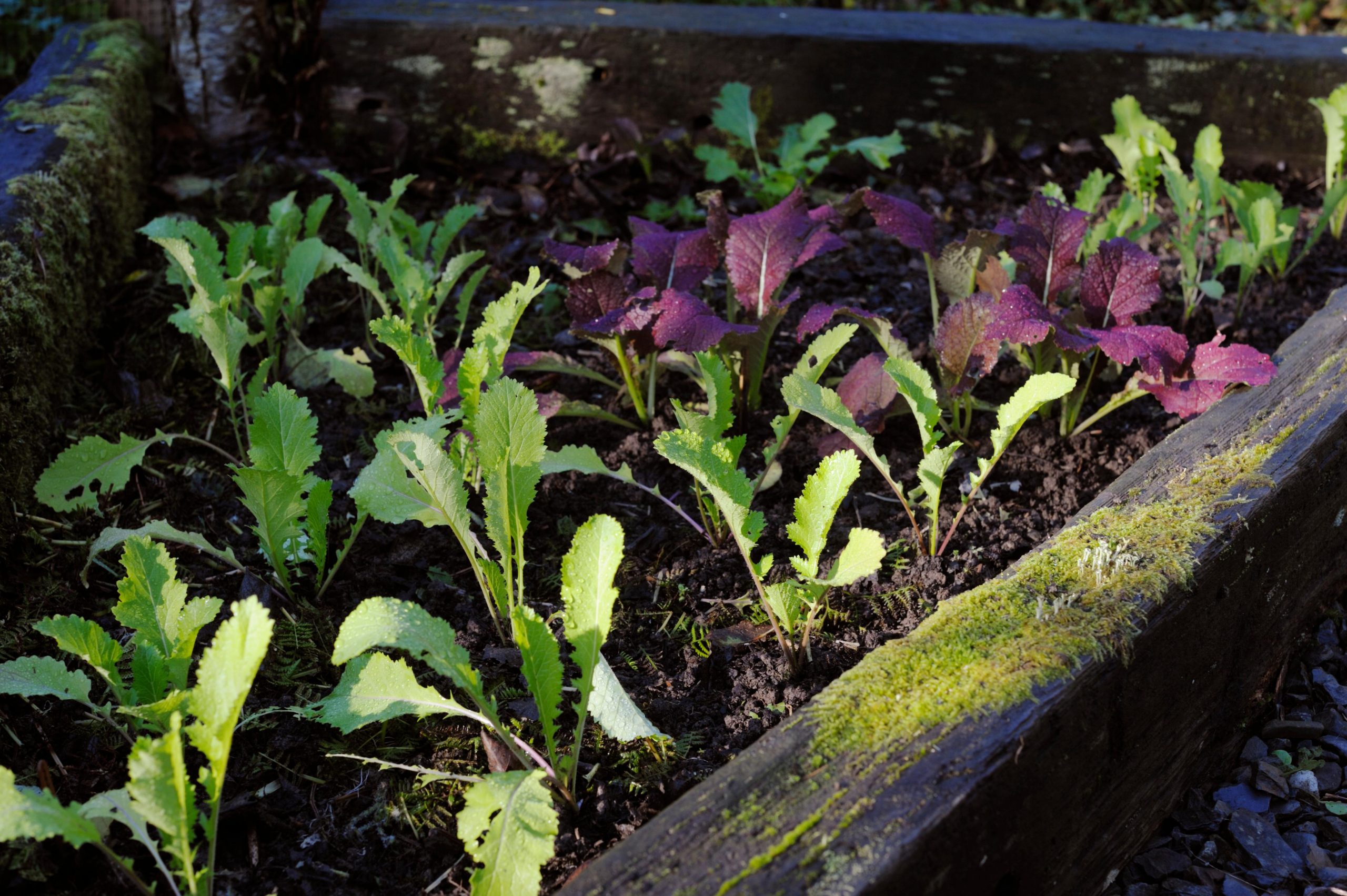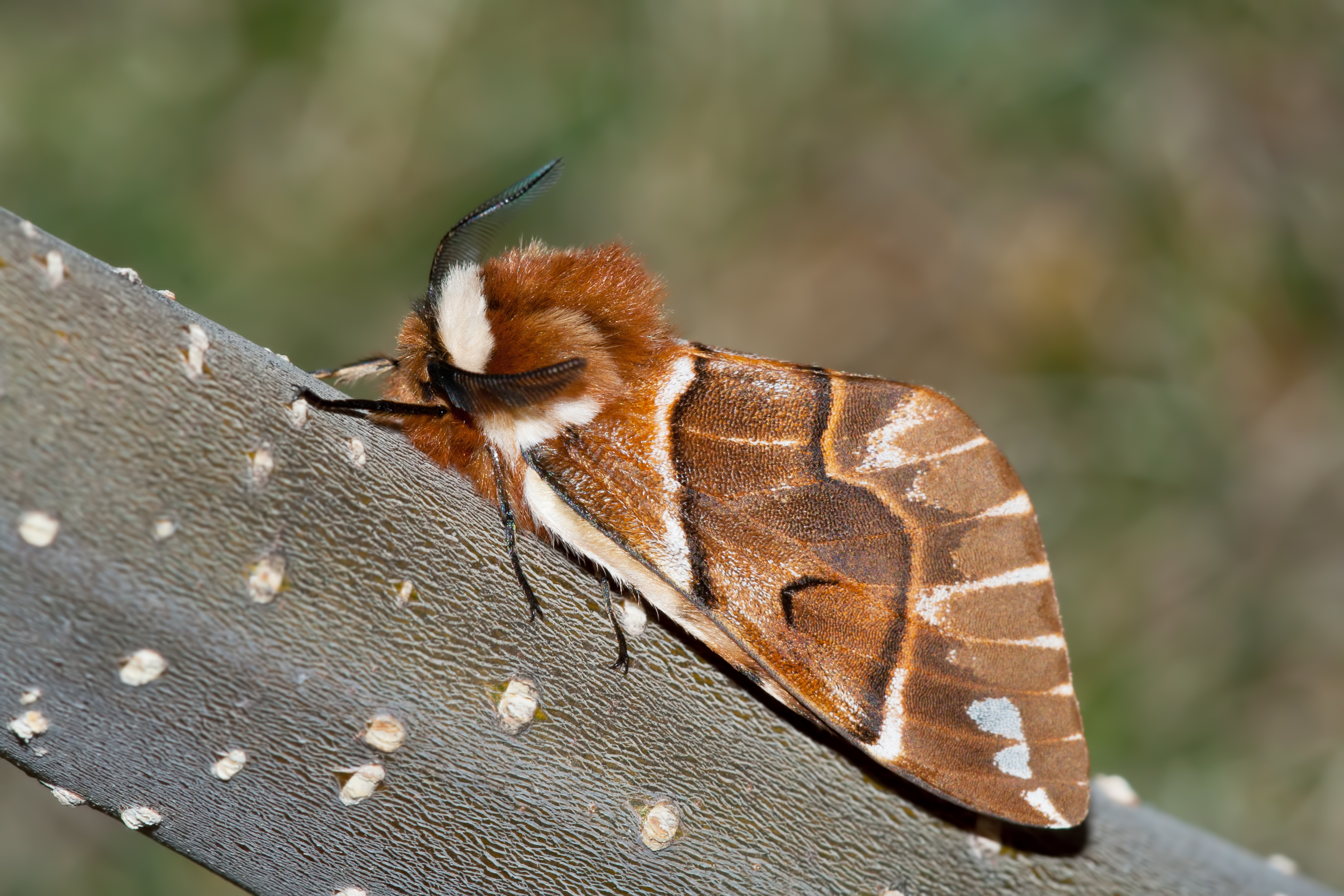How to grow Oriental greens in an English country garden
Expert gardener Mark Diacono shares his advice on how to grow some of the delicious greens which have come to these shores from around the globe.


Most Oriental greens or leaves are brassicas that originate from China and surrounding countries. Although diverse in looks and taste, they are unified to a degree by a ‘green’, peppery flavour, an adaptability to a cut-and-come-again approach and a robust nature.
Some, such as Chinese cabbage and pak choi, are mild and crisp; others, including mibuna and mizuna, are mild and peppery when small, developing a lively heat when large; a few, such as Shungiku, have their own distinct character. All are delicious raw and, although tenderness often reduces as the leaves grow, an agreeable crunch typically develops and even when very large they are superb stir fried. Chinese cabbage and pak choi are among those that produce dense hearts, often with a mild flavour, and are particularly good grilled or fried in halves or wedges.

Oriental leaves tend to be vigorous, highly productive, resilient and largely unfussy about soil and climate. Perhaps most usefully, there are enthusiastic growers through the coldest months of the year.
Although you can start them off undercover, I think they are best sown directly into the ground from March to early May and from August to early October. The only time I start Oriental leaves off undercover is February, for an early start, planting them out of their modules when they are just over an inch high, after a few days hardening off. Allow about 2½in between seeds if growing for cut-and-come-again leaves and perhaps 10in if you want them to develop heads. Sowings later in the year will be perfectly hardy outdoors through winter: I’ve brushed a couple of feet of snow off a few of them and harvested leaves from the perfectly happy plants lying beneath. If I were you, I’d avoid growing them through summer’s heat, as they will bolt the moment you turn your back and flea beetle is at its most numerous then. If you are intent on growing them at that time of year, there are a few bolt-resistant varieties you could try. Give them a shady spot and I’d suggest fleece to protect the plants from flea beetle and cabbage root fly.
Most Oriental leaves grow into a mature head, but slicing the leaves off 2in or so above the ground allows enough of an engine room in the root system and leaf stubs to grow more to follow. This cut-and-come-again approach is a highly productive way of growing that gives you much more of a harvest for your space, time and money. When to cut is up to you: the leaves are typically mild when small, increasing in intensity with size. It’s usual to get three to four cuttings before the texture becomes too coarse. You can expect to harvest leaves a month or so after sowing and mature heads two to three months from sowing, depending on the time of year.
There are quite a few Oriental leaves to choose from; here are a few of the ones I love best. Mizuna has finely dissected leaves with a bright, peppery, brassica flavour; mibuna is similar, if slightly stronger and more grassy in flavour, with gently lobed rather than incised leaves. I particularly like Mizuna ‘Red Baron’ for its deep purple and green leaves. Should either start to run to seed in the heat, you can steam the young flowering stems like sprouting broccoli. Mustard ‘Giant Red’ has bright green and purple leaves robust in flavour and texture that can be harvested when small or allowed to grow until a couple of feet tall; the larger they get, the hotter — bordering on horseradish — the leaves become.

‘Green In Snow’ is perhaps my favourite of all the Oriental leaves. Lime green, long and gently serrated of leaf, it has a fresh, grassy, luscious flavour that has a bright heat to it without it taking over. If you are after something gentler, then Pak Choi ‘Tatsoi’ might be for you; mild, clean and grassy in taste, it forms tight glossy rosettes that can be harvested whole as or as cut-and-come-again leaves. Shungiku, also known as chop suey greens, is perhaps the most unusual of them all. A beautiful edible chrysanthemum, its incised leaves have a peculiar celery, carrot, aniseed metallic flavour that is really good in small amounts punctuating leafy salads and really not in large quantities by itself.
Sign up for the Country Life Newsletter
Exquisite houses, the beauty of Nature, and how to get the most from your life, straight to your inbox.
Mark Diacono grows edibles, both usual and unusual, at Otter Farm in Devon — www.otterfarm.co.uk. His book From Scratch: Ferment (Quadrille, £12.99) is out now.
Mark is lucky enough to spend most of his time eating, growing, writing and talking about food. He has written fourteen award-winning books, including A Year at Otter Farm and A Taste of the Unexpected (both won Food Book of the Year, and Garden Book of the Year). Known for growing everything from Szechuan pepper to pecans to Asian pears, Mark's refreshing approach to growing and eating has done much to inspire a new generation to grow some of what they eat. He was involved in the early days of River Cottage, appearing in the TV series, and writing four River Cottage books. Mark writes to a global audience on his best-selling Substack: Mark Diacono’s Abundance.
-
 From Vinted to Velázquez: The younger generations' appetite for antiques and Old Masters
From Vinted to Velázquez: The younger generations' appetite for antiques and Old MastersThe younger generations’ appetite for everything vintage bodes well for the future, says Huon Mallalieu, at a time when an extraordinary Old Masters collection is about to go under the hammer.
By Huon Mallalieu
-
 In all its glory: One of Britain’s most striking moth species could be making a comeback
In all its glory: One of Britain’s most striking moth species could be making a comebackThe Kentish glory moth has been absent from England and Wales for around 50 years.
By Jack Watkins